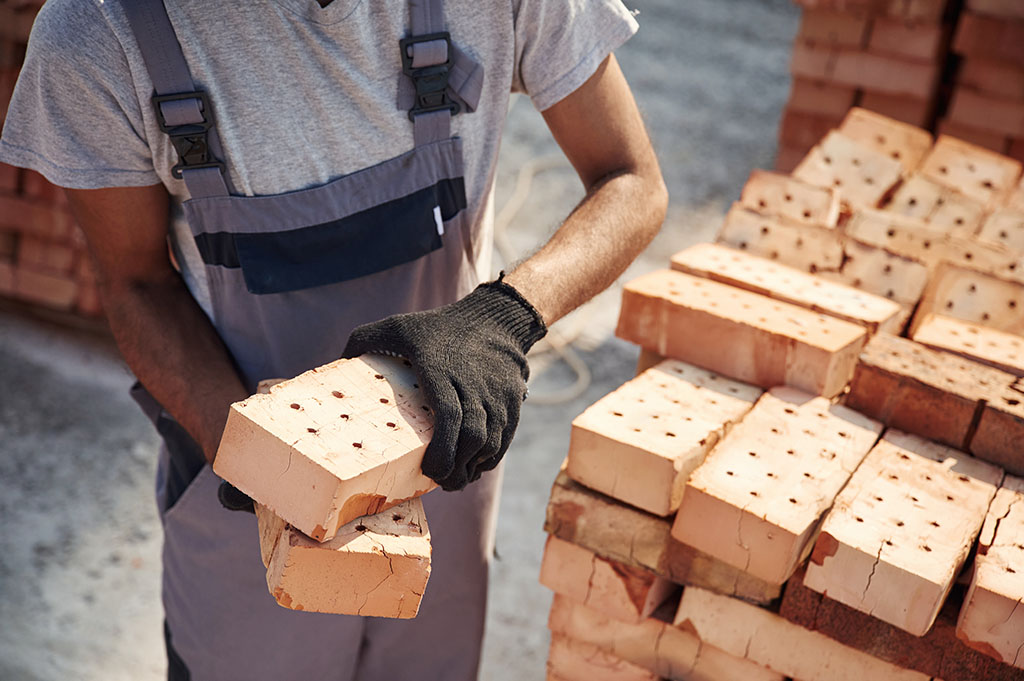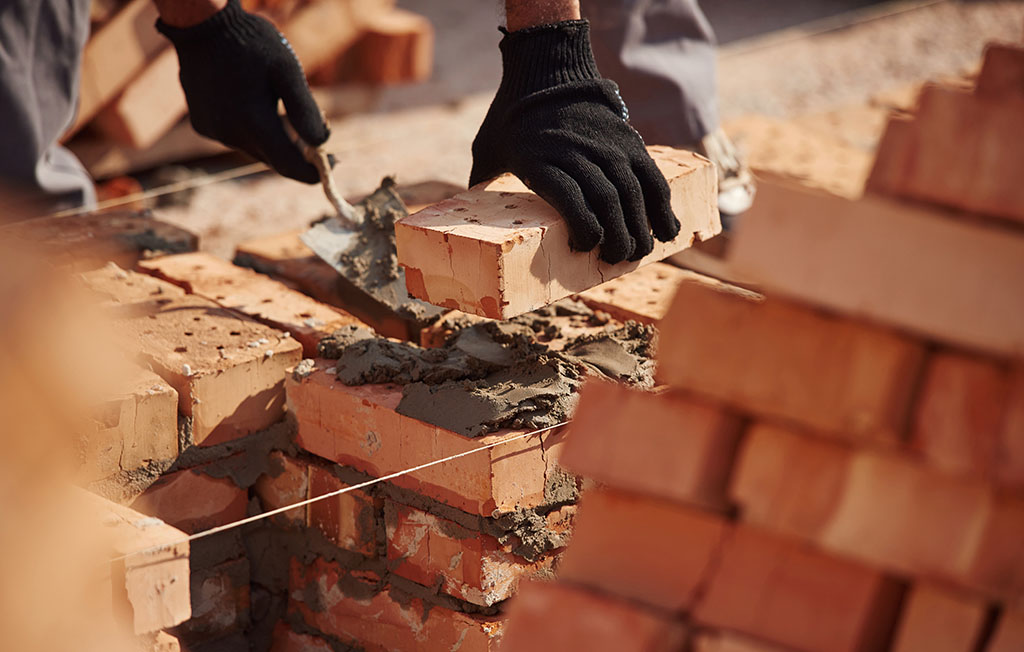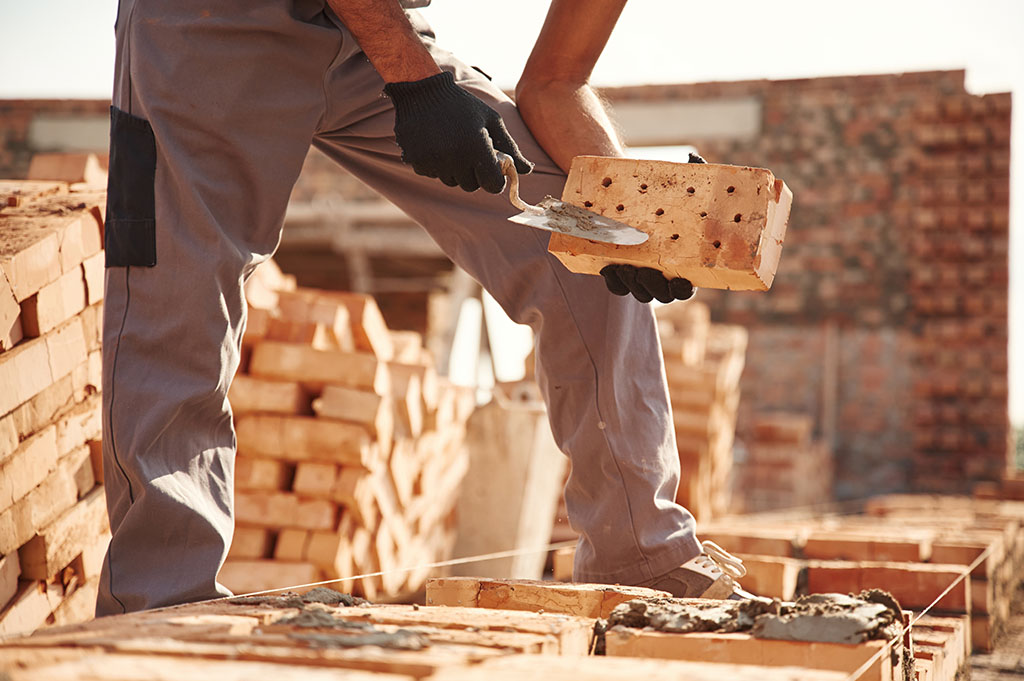Tuckpointing, a crucial aspect of caring for the structural integrity and aesthetic appeal of brickwork, can differ in cost depending on several factors. At Bart Tuckpointing, we believe in clarity and want our customers to know what impacts the cost of tuckpointing. Discover four key factors to think about prepared by Bart Tuckpointing – the most trusted tuckpointing and masonry contractor Chicago has:

1. Size and Scope of the Project – Size Matters!
The range of tuckpointing required directly contacts the overall cost. A larger area in need of repair will naturally require more materials, labor, and working hours, increasing the overall cost. Factors such as the height of the building, availability to the affected areas, and the complexity of the brickwork also play a role in determining the scope of work. For example, tuckpointing a small segment of a low-rise residential building will generally be less expensive than repairing the entire elevation of a multi-story commercial property.
Moreover, the seriousness of the damage and the condition of the existing mortar joints will influence the extent of tuckpointing needed. If the mortar joints are severely deteriorated or if there are structural issues present, such as cracks or water damage, more extensive repairs may be required, further driving up the cost of tuckpointing.
The type and quality of materials used for tuckpointing will affect the overall cost of these services. The highest quality mortar and matching brick color may cost more initially, but it should provide better durability and aesthetics in the long run. This approach reduces the need for later repairs or servicing.
With this knowledge, these factors can help property owners make literated decisions about tuckpointing projects and invest budget wisely.
2. Condition of the Existing Mortar – Only in Good Shape!
The condition of the current mortar plays a significant role in calculating the cost of tuckpointing. If the mortar shows visible signs of aging, damage, dirt, or crumbling, more intensive work will be needed, leading to higher expenses. However, if the mortar is in excellent condition with minimal damage, the tuckpointing process may incur lower material costs.
To assess the condition of the current mortar, we need to pay attention to:
The Extent of Damage: The extent of mortar damage directly affects the overall project and its cost. Severe deterioration of the mortar, such as holes or erosion, will require more work, including the removal of the old mortar and its replacement with new mortar.
Type of mortar: The sort of mortar used in the current state also affects the cost of tuckpointing. Different mortar mixtures, such as traditional lime mortar or modern cement mortar, require different repair techniques and materials for reconstruction. Additionally, mortar types that do not match each other can lead to future problems if not properly addressed during the tuckpointing process. It is important to prepare properly for those issues when it’s not too late.
Impact of moisture: Mortar is exposed to excessive moisture and water. Therefore, the construction is more susceptible to degradation over time. Factors such as climate, building orientation, and closeness to water sources can influence the level of moisture exposure and consequently the degradation of mortar. Tuckpointing in areas with high moisture levels may require additional waterproofing measures, contributing to overall costs.
Type of Mortar: The type of mortar used in the original construction also affects the tuckpointing process. Different mortar compositions, such as traditional lime mortar or modern cement-based mortar, require varying repair techniques and materials. Additionally, incompatible mortar types may lead to future issues if not addressed correctly during tuckpointing.
Moisture Exposure: Mortar joints exposed to excessive moisture or water infiltration are more prone to deterioration over time. Factors such as climate, building orientation, and proximity to water sources can influence the level of moisture exposure and subsequent mortar degradation. Tuckpointing in areas with high moisture levels may require additional waterproofing measures, contributing to overall cost of tuckpointing.
Structural Integrity: The structural integrity of the masonry wall or structure impacts the tuckpointing process. If the underlying brick or stone substrate is compromised or unstable, additional reinforcement or repairs may be necessary to ensure a durable and long-lasting tuckpointing solution. Strengthening the structure may involve reinforcing steel, crack repair, or other structural enhancements, adding to the overall project expenses.
Accessibility: The accessibility of the mortar joints can also affect cost of tuckpointing. Mortar joints located in hard-to-reach areas or confined spaces may require specialized equipment or scaffolding for safe access, increasing labor and logistical expenses. Conversely, easily accessible mortar joints typically require less effort and time to repair, resulting in lower costs.
Assessing the condition of the existing mortar is essential for accurately estimating cost of tuckpointing and planning the scope of work. Professional tuckpointing contractors will conduct a thorough inspection of the masonry structure to determine the extent of mortar damage and recommend appropriate repair solutions tailored to the specific needs of the project.

3. Accessibility of the Work Area – Everywhere and Everything
The accessibility of the work area is a significant factor influencing the cost of tuckpointing projects. The ease or difficulty of accessing the mortar joints impacts labor requirements, equipment needs, and overall project logistics, all of which can affect pricing.
Factors influencing the accessibility of the work area include:
Height and Location: Mortar joints located at significant heights or in challenging-to-reach areas, such as upper stories of buildings or confined spaces, require specialized equipment and safety measures for access. Tall buildings may necessitate the use of scaffolding, aerial lifts, or other elevated platforms, increasing labor and equipment costs. Similarly, mortar joints located in tight corners, alcoves, or behind obstacles may require additional effort and time to access and repair.
Obstructions and Interference: The presence of obstructions or interference in the work area can hinder access to mortar joints and complicate the tuckpointing process. Common obstructions include architectural features, protruding elements, utility lines, or landscaping features near the masonry structure. Tuckpointing around these obstacles may require careful maneuvering, temporary removal, or protection to ensure thorough and precise repairs.
Building Layout and Configuration: The layout and configuration of the building or structure can influence access to mortar joints and impact cost of tuckpointing. Complex architectural designs, irregular shapes, or multi-level structures may present challenges in reaching all mortar joints uniformly. Contractors may need to develop custom access solutions or employ specialized techniques to navigate the building’s layout efficiently.
Safety Considerations: Safety is paramount in tuckpointing projects, especially when working at heights or in challenging environments. Accessing mortar joints in high-risk areas requires adherence to strict safety protocols and regulations, including fall protection measures, equipment certification, and personnel training. Contractors may factor in additional safety costs, such as safety equipment rentals, insurance premiums, and compliance expenses, when estimating project bids.
Logistical Constraints: Logistical constraints, such as limited space for equipment staging, parking restrictions, or site-specific regulations, can affect project timelines and costs. Contractors must account for logistical challenges during project planning and budgeting to ensure smooth execution and compliance with local ordinances and regulations.
Addressing the accessibility of the work area is essential for optimizing tuckpointing efficiency and minimizing project delays and disruptions. Experienced tuckpointing contractors will assess the site conditions thoroughly and develop tailored strategies to overcome accessibility challenges while delivering high-quality, cost-effective tuckpointing solutions.

4. Choice of Materials and Finishes – Overall Cost of Tuckpointing
Color Pigments: Color pigments are added to mortar to match the existing masonry and achieve a cohesive appearance after tuckpointing. The cost of color pigments varies depending on factors such as quality, brand, and quantity required to achieve the desired color match. Custom color matching may involve additional expenses, as specialized pigments or tinting processes may be necessary to achieve precise color replication.
Specialized Additives: In some cases, specialized additives may be incorporated into the mortar mix to enhance performance characteristics such as water resistance, flexibility, or adhesion. These additives may include polymer modifiers, waterproofing agents, or bonding agents, each of which incurs additional costs. The selection of additives depends on the specific requirements of the project and the desired performance attributes.
Finishes: The choice of finish applied to the mortar joints can also impact cost of tuckpointing project. Common finishes include flush, weather struck, and recessed joints, each offering different aesthetic effects and levels of durability. Additionally, decorative finishes such as tuckpointing, ribbon pointing, or grapevine pointing may involve specialized techniques and craftsmanship, resulting in higher labor and material costs. Clients may opt for premium finishes to enhance the visual appeal of the masonry facade, albeit at an increased cost of tuckpointing.
Supplier and Brand: The supplier and brand of materials can influence pricing, with premium or specialized products often commanding higher costs. Contractors may source materials from reputable suppliers known for quality and consistency, ensuring optimal performance and longevity of the tuckpointing repairs. While budget-friendly options may be available, prioritizing quality materials can contribute to long-term durability and customer satisfaction.
By considering these key factors, property owners can better understand the cost implications of tuckpointing projects and make informed decisions that align with their budget and needs. At Bart Tuckpointing, we’re committed to providing transparent pricing and delivering high-quality tuckpointing services that exceed our customers’ expectations.


